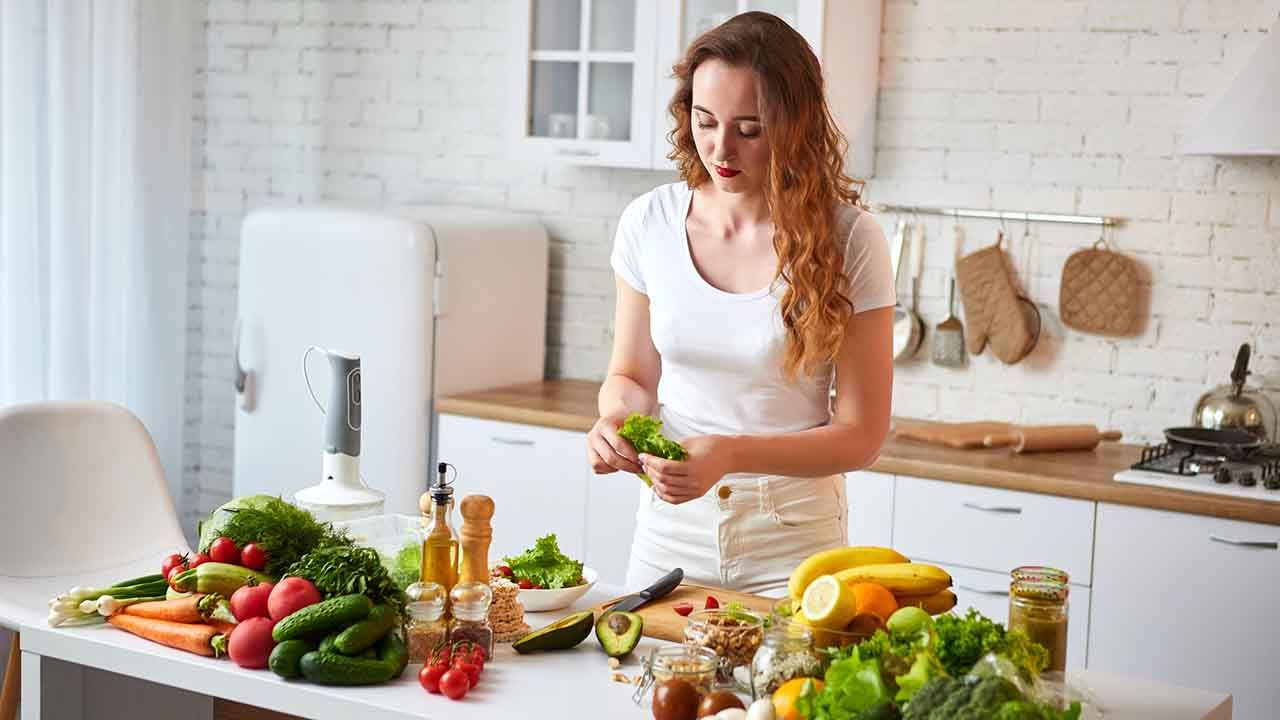A Beginner's Guide To Eating Gluten-Free

So you've found out that you need to eat gluten-free but not sure where to begin? Removing gluten from your everyday food can seem overwhelming but it doesn't need to be complicated! Here are some tips to help you revamp your diet.
What is gluten?
Gluten is a family of proteins found in barley, wheat and rye. From a practical perspective in the kitchen, it's what makes baked goods such as breads and cakes light and spongy, while giving bread dough elasticity.
For most people gluten isn't an issue, however for those with Coeliac disease, gluten intolerance or sensitivity, the body treats gluten as a foreign substance which causes their immune system to launch an attack on it. This leads to the damage of cells lining the wall of the small intestine sustaining damage and in turn, affects the body's ability to absorb nutrients from food properly.
Why go gluten-free?
Before we get into it, it's important to note that we don't recommend removing gluten from your diet - or anything for that matter - unless you have been advised to by a doctor, specialist or other professional.
It's true that eating a gluten-free diet is a lot healthier than your average modern diet that includes junk food and takeaways, however, removing anything from your diet completely is a big step to take (both mentally and practically) so we wouldn't suggest doing so unless it's medically necessary.
If you're keen on going gluten-free because you believe you have an intolerance, consider starting on a sliding scale to see if it makes a difference first - could you simply eat less foods containing gluten rather than removing them completely?
Time for a kitchen makeover
The average Kiwi household pantry, fridge and freezer contain a lot of products with gluten in them, so if this is your first step into taking gluten out of your diet, you'll be needing to do a kitchen makeover!
Some products may be created on the same production line as products that also contain gluten, so it's important to differentiate whether you're going completely gluten-free, you're gluten intolerant, or cutting down on gluten for other reasons.
This doesn't just affect products such as flour and bread, but also many pre-made sauces and baked goods, foods with seasoning (such as chips and crackers), soy sauce, beer, soups, dressings, candy and lollies... to name a few.
Because of this, it's important to learn how to read nutrition labels correctly and be mindful of ingredients and products that typically contain gluten. Something may seem healthy and gluten-free, but you never actually know unless you check the ingredients label. These foods include (not a full list):
- Durum
- Cereals
- Malt
- Crackers
- Wheat
- Semolina
- Rye
- Barley
- Couscous
- Pasta
- Bread and baked products such as pretzels, bread, cakes, muffins, pizza bases, biscuits
Our general recommendation for a kitchen makeover to help with healthy eating are actually exactly the same (mins the gluten): If it's in the house you or someone you know will eat it.
If you live with other people - especially if someone else does the cooking - here's where you need to make another decision. Is everyone in your household going gluten-free or just yourself? This will dictate whether you're revamping your whole kitchen, or just the snacks and foods that you eat. If it's the latter, you may need to let everyone else in the household understand your plans so there's no cross-contamination of gluten-containing foods, and they know which products to use if they are preparing food you will be eating.
This includes preparation areas for food and the use of appliances and utensils (such as toasters, sandwich presses, chopping boards etc.).
What's left to eat?
Plenty! Our recommendations for a general healthy diet are actually no different from a gluten-free diet apart from the gluten. But it may take a shift in mindset around what you're eating. It's a good idea to focus on what you can eat rather than what you can't. If you've read our kitchen makeover article aimed at encouraging healthier diet changes, it's actually the same. Ditch the processed, packaged foods and bring as much of your diet back to basic whole foods:
- Vegetables
- Fruit
- Nuts and seeds
- Whole grains (in your case, the gluten-free ones)
- Lean protein
Most people don't make a complete range of new meals or have different snacks from week to week. All you need to do is develop a core set of quick and easy go-to recipes that you can become a pro at; once you have them sorted, you can play around with adding new recipes when you have the time and feel like making the effort.
If you love baking, there are a range of gluten-free products on the market including flours made from alternative grains such as coconut, corn, rice or almond.
Eating out
Gluten-free eating is so common, there are gluten-free menu options in many restaurants and cafes these days. If you're heading out for a meal, consider checking the website of the place you're going to ahead of time so you can get a heads up on their menu and possibly check nutrition/ingredients information if it's available.
Things to be mindful of:
- Asian restaurants - Soy sauce and noodles
- Burgers and pizza - Breads, processed meats and sauces
- Stews, sauces and soups thickened with flour
- Meals made with seasoning or sauces
- Croutons in salads
- Italian restaurants - Pasta and pizza bases
- Cafes - Baked goods
Your action plan
- Familiarise yourself with ingredients that may contain gluten
- Learn how to read nutrition labels and start doing it regularly
- Explain to others in your household what you are doing - especially those who prepare meals and handle ingredients or products in the house
- Do a kitchen makeover
- Start creating your go-to list of gluten-free recipes that you can easily whip up on a busy weekday
- Add more recipes over time for variety
Remember, you've just got to keep at it (and like anything, it will come with practice). Once this way of eating becomes the norm for you, it will become a lot easier! If it becomes too overwhelming, consider asking a nutritionist or dietician for help.
Image / DepositPhotos









